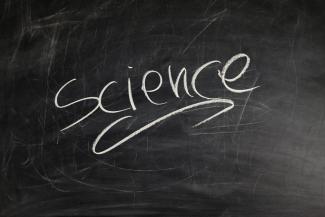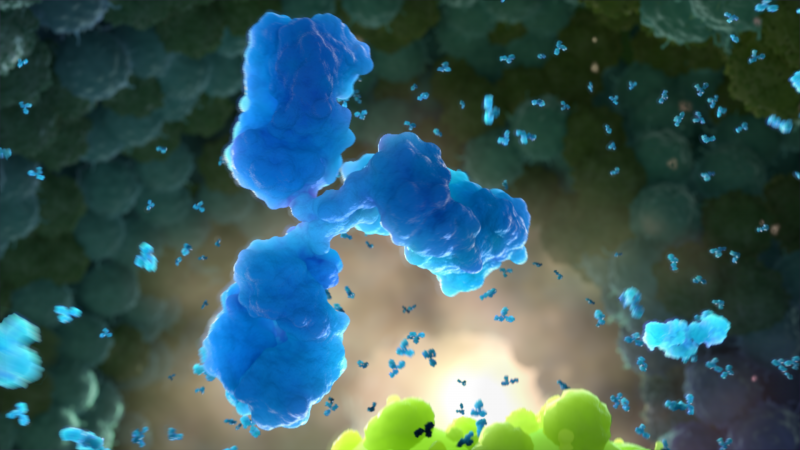Spotlight on: Science Isn’t Static – How Science Evolves

Science is the process by which we develop knowledge. Over time, and with many experiments, a consensus about a scientific topic develops. However, science is ever evolving, meaning it changes as new information comes to light. That does not mean that previous research is outdated or irrelevant. Rather, it demonstrates that science builds on past understanding. Helping students become familiar with the evolution of knowledge through its stories is a useful way to demonstrate the cumulative nature of science and build resilience when it comes to understanding real-time changes to our collective knowledge about the world in which we live. Let’s take a closer look.
The example of polio
Our understanding of polio is one example of how science evolves. As described on the Parents PACK webpage, “Science Tells a Story Written by Many Authors,” efforts to develop a polio vaccine in the 1930s were unsuccessful, but understanding that evolved in the 1940s and 1950s provided useful information and tools that informed the successful development of polio vaccines in the 1950s. While Salk and Sabin are often the individuals mentioned in the context of polio vaccines, the work of many before them was necessary to their success. The Vaccine Makers Project (VMP) has developed a lesson plan, “On the Shoulders of Heroes: Toward a World without Polio,” that helps students explore these scientists, when they were working and where — positioning students to learn about polio and the vaccine through the synthesis of the stories of individuals and teams in geographically disperse labs.
Nobel Examples
Science often develops in fits and starts; sometimes, taking decades to prove a hypothesis. When an idea goes against established thinking, this work can be even more intense. While rogue ideas are common, proving them is not. The Parents PACK article, “No. This Study Does Not Prove What You Think It Does: Part II,” describes how scientists address doubts about their hypotheses, taking feedback, going back to the lab and generating even more evidence. Over time, other scientists typically also start doing experiments to prove (or try to disprove) the novel ideas. The Parents PACK article describes three such examples (hepatitis B, prions, and the bacterial cause of ulcers), including timelines of important developments. Each of these examples resulted in a Nobel Prize because of the significance of the contribution to science, and each offers a unique and compelling story.
Using stories in the classroom (Activity ideas)
Students can engage with the characters and developments in scientific stories, making the science itself more interesting and easier to scaffold. With this in mind, these ideas offer suggestions for building stories into some of your lessons:
- Use the VMP lesson about polio to have students develop a timeline and map about the history of our understanding of polio.
- Use the examples of hepatitis B, prions, or the cause of ulcers from the “No. This Study Does Not Prove …” article as reading passages to introduce lessons about surface markers or proteins, prions, or the digestive tract or bacteria, respectively.
- Have students identify a scientific topic of interest and work in small groups or individually to tell the story of that science by identifying key characters and developing a timeline for our understanding of the topic. Alternatively, assign groups particular topics. Some examples could include:
- Example #1: Smallpox vaccine
Originally, people figured out how to leverage the method of variolation in order to secure some immunity against this dreaded disease that typically killed 30% of those who were infected. The recognition of a connection between infection with cowpox and protection from smallpox led to the development of the first vaccine.
- Example #2: Climate change
Most people would think that the scientific understanding of greenhouse gasses, global warming and climate change occurred within the last few decades; however, the building blocks and discoveries that informed this awareness started well before.
- Example #3: mRNA technology
The COVID-19 pandemic was the first time most people heard about using mRNA in a vaccine, so many assumed that the technology was brand new. In fact, scientists had been working on understanding mRNA and studying it for the possibility of developing vaccines or other therapies for some time.
- Example #1: Smallpox vaccine
- Have students watch a documentary or read a biography or autobiography about a scientist. Some examples include:
- VMP Documentaries
- HILLEMAN – A Perilous Quest to Save the World’s Children
- Marion Gruber: Preparedness Is Prevention
- Stanley Plotkin: Pioneering the use of fetal cells to make rubella vaccine
Check out our screening resources page for classroom materials related to the above films, including FAQ sheets, film comprehension questions and more.
- Documentaries from others:
- Books
- The Sky Is Not the Limit: Adventures of an Urban Astrophysicist by Neil deGrasse Tyson
- Breaking Through: My Life In Science by Katalin Karikó
- Sharks Don't Sink: Adventures of a Rogue Shark Scientist by marine biologist Jasmin Graham
- Vaccinated: One Man’s Quest to Defeat the World’s Deadliest Diseases by Paul A. Offit
- The Code Breaker: Jennifer Doudna, Gene Editing, and the Future of the Human Race by Walter Isaacson
- House on Fire: The Fight to Eradicate Smallpox by William H. Foege
- Into the Amazon: The Life of Cândido Rondon, Trailblazing Explorer, Scientist, Statesman, and Conservationist by Larry Rohter
- Sisters in Science: A Riveting Historical Account of Women in Science by Olivia Campbell
Related resources
- Vaccine Timeline (History of Vaccines)
- Vaccine History: Developments by Year (VEC at CHOP)
- Vaccine History: Vaccine Availability Timeline
- History of the Smallpox Vaccine (WHO)
- History of Climate Science Research (UCAR Center for Science Education)
- mRNA Technology: Four Decades in the Making (Unbiased Science)

